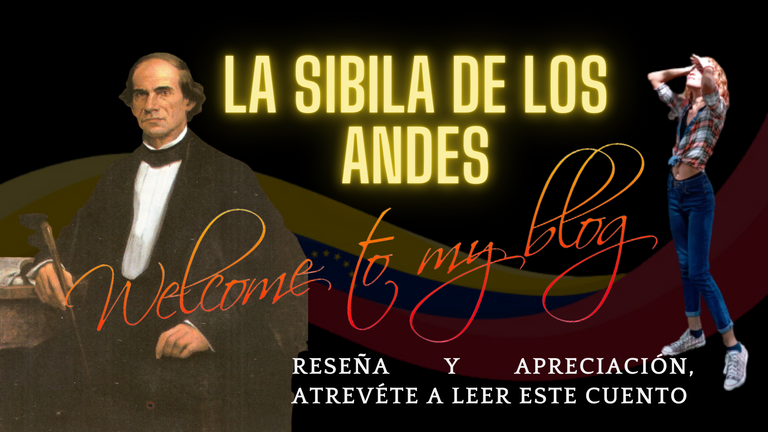



Raíces culturales en la antigua Grecia
La herencia del mundo helénico, especialmente las grandes obras literarias creadas por grandes poetas y filósofos como Hesíodo, Homero, Platón, entre otros, nos hablan de mucho más que las aventuras de guerreros con cualidades heroicas. Todas las descripciones de razonamientos, acciones, normas y patrones obedecen a un acervo cultural y social configurados bajo una serie de normas de ética y moral. Poemas épicos como la líada y la Odisea nos ofrecen una obra de arte en cuanto una construcción ficcional sostenida por todo un universo real que se había configurado sobre una concepción racional e imaginal de la sociedad griega. La primera fe religiosa y todo un conjunto de conductas morales y éticas conducían al hombre griego a la areté.
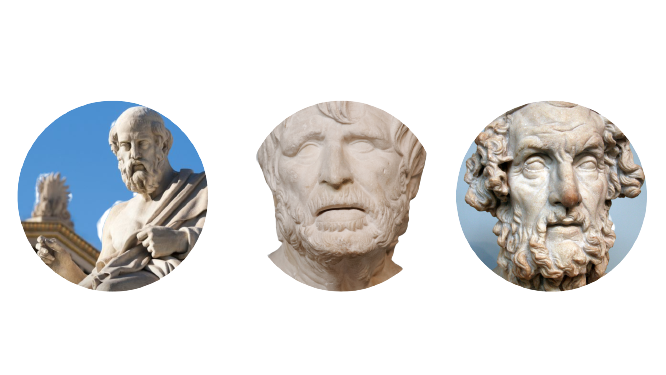 Complemento visual de quienes pudieron haber sido Hesíodo, Platón y Homero
Complemento visual de quienes pudieron haber sido Hesíodo, Platón y Homero
Cultural roots in ancient Greece
The heritage of the Hellenic world, especially the great literary works created by great poets and philosophers as Hesiod, Homer, Plato, among others, tell us much more than the adventures of warriors with heroic qualities. All the descriptions of reasoning, actions, norms and patterns obey a cultural and social heritage configured under a series of ethical and moral norms. Epic poems such as the Iliad and the Odyssey offer us a work of art as a fictional construction sustained by a whole real universe that had been configured on a rational and imaginal conception of Greek society. The first religious faith and a whole set of moral and ethical behaviors led Greek man to areté.
Foto tomada por mi. Mis ediciones son de la Biblioteca de "El Nacional", de la colección Grandes Clásicos de la Literatura


Hombres de grandeza espiritual para afrontar grandes batallas
Seguramente con esto último te surge la pregunta “¿pero qué es el areté? Pues el areté comprendía muchas cosas: algo como una grandeza espiritual pero que también se refería a la aptitud, es decir, las cualidades físicas, al igual que el valor y otras cualidades relacionadas a la actitud. Se entendía que estos hombres al tener todas esas cualidades, alcanzaban la areté y eran una suerte de semidioses. Por eso en los poemas homéricos los guerreros se describen como de bellos cuerpos y rostros.
Las primera expresión literaria que brotó en Grecia fue la épica. De acuerdo al crítico y experto literario italiano Angelo Marchese en su Diccionario de retórica, crítica y terminología iteraria, define la épica como la primera manifestación literaria de cualquier civilización y nombra algunos ejemplos de otras civilizaciones distintas a la griega: la epopeya mesopotámica del héroe Gilgamesh, el Mahabharata, de la India, entre otros. Si te interesa profundizar en esto te dejo el dato editorial de esta información al final del post.

Men of spiritual greatness to face great battles
Surely with this last question the question arises "but what is areté? Well, areté comprised many things: something like spiritual greatness, but it also referred to aptitude, that is, physical qualities, as well as courage and other qualities related to attitude. It was understood that these men, having all these qualities, attained areté and were sort of demigods. That is why in Homeric poems warriors are described as having beautiful bodies and faces.
The first literary expression that sprouted in Greece was the epic. According to the Italian critic and literary expert Angelo Marchese in his Dictionary of rhetoric, criticism and iterary terminology, he defines the epic as the first literary manifestation of any civilization and names some examples of other civilizations different from the Greek one: the Mesopotamian epic of the hero Gilgamesh, the Mahabharata, from India, among others. If you are interested in going deeper into this I leave the editorial data of this information at the end of the post.
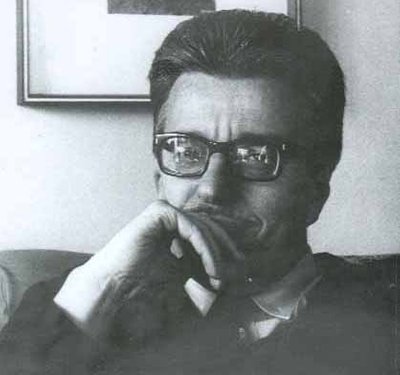 Source
Source

Re-aprendiendo sobre el mito
Desde una perspectiva propia, Marchese toca un punto muy importante para que reflexionemos de manera crítica acerca de cómo nos han enseñado la literatura en la escuela, pues el mito, al menos como yo lo recuerdo en mi educación primaria, se enseña, generalmente, como un relato que tiene solo contenido fantasioso. Pero aquí expondré que es mucho más que eso. El teórico explica que «para nuestras literaturas, la épica —en su mayor parte— procede de Grecia. Las epopeyas homéricas, la Ilíada y la Odisea son el producto de la recopilación hecha por los aedos sobre la leyenda de la guerra de Troya, hasta que el Homero de la tradición fue quien le terminó de dar forma» (129).
 Las libaciones era uno de los rituales más sagrados, porque era un tributo a los dioses. En la Ilíada ocurre que por un momento se bajan las armas para hacer las libaciones a los dioses.
Las libaciones era uno de los rituales más sagrados, porque era un tributo a los dioses. En la Ilíada ocurre que por un momento se bajan las armas para hacer las libaciones a los dioses.Fuente
A través del mito se educaba a la civilización griega, eran historias cargadas de la imaginación del aedo pero que provenía de una realidad y esa realidad estaba regida por un conjunto de normas, por eso en la Ilíada además de ver a aqueos y troyanos enfrentados entre sí, vemos cómo hacen una pausa para cumplir los rituales sagrados, como las libaciones. Esto obedece a una serie de normas y tradiciones que incluso tienen el valor e importancia de interrumpir por un momento la batalla. Eran normas y tradiciones sagradas y como tal se respetaban.
Re-learning about the myth
From his own perspective, Marchese makes a very important point for us to reflect critically on how we have been taught literature in school, because the myth, at least as I remember it in my primary education, is generally taught as a story that has only fantasy content. But here I will argue that it is much more than that. The theorist explains that "for our literatures, the epic -for the most part- comes from Greece. The Homeric epics, the Iliad and the Odyssey are the product of the compilation made by the Aedos on the legend of the Trojan War, until the "Homer of tradition was the one who finished giving it form" (129).
The libations were one of the most sacred rituals, because it was a tribute to the gods. In the Iliad it happens that for a moment the weapons are lowered to make libations to the gods.
Through the myth the Greek civilization was educated, they were stories loaded with the imagination of the aedo but that came from a reality and that reality was governed by a set of rules, so in the Iliad besides seeing Achaeans and Trojans facing each other, we see how they pause to fulfill the sacred rituals, such as libations. This obeys a series of rules and traditions that even have the value and importance of interrupting the battle for a moment. They were sacred rules and traditions and as such were respected.

Source


Más que solo historias
El mito, en la definición de Marchese, no es solamente «elaboración literaria» sino «norma ética». De modo que el mito cumplía una función pedagógica, el cuerpo no requería más que un aprendizaje cognitivo, necesitaba de un aprendizaje emocional y sensorial. Y esto se lograba a través de todas esas historias conmovedoras y excitantes de héroes y dioses que convivían frente a frente.
Fuente

El areté era el concepto acuñado a la grandeza de esos hombres que protagonizaban las heroicas historias. El autor Werner Jaeger tiene una obra fundamental para profundizar más en este concepto, pues para la civilización griega el areté era un conjunto de cualidades propio de hombres nobles. En un fragmento de su obra explica que «el tema central de la historia de la educación griega (...) es el concepto de areté, que se remonta a los tiempos más antiguos. El castellano actual no ofrece un equivalente exacto de la palabra» (23). Si te interesa esta obra y la cita, también dejaré los datos editoriales al final del post.
More than just stories
Myth, in Marchese's definition, is not only "literary elaboration" but "ethical norm". So myth fulfilled a pedagogical function, the body did not require more than cognitive learning, it needed emotional and sensory learning. And this was achieved through all those moving and exciting stories of heroes and gods living face to face.

Fuente
Areté was the concept coined for the greatness of those men who starred in heroic stories. The author Werner Jaeger has a fundamental work to go deeper into this concept, because for the Greek civilization areté was a set of qualities proper to noble men. In a fragment of his work he explains that "the central theme of the history of Greek education (...) is the concept of areté, which goes back to the most ancient times. The current Spanish does not offer an exact equivalent of the word" (23). If you are interested in this work and the quote, I will also leave the editorial data at the end of the post.
Fuente



En la historia venezolana ocurrió de otra forma
A diferencia del pueblo heleno, nuestra civilización venezolana tiene su primera épica en los albores de nuestra independencia política, con la obra de Eduardo Blanco titulada Venezuela Heroica, escrita en 1881. En uno de mis más recientes posts profundicé un poco sobre esta obra y también explicaba que nuestra literatura nace con los hombres de la política pues eran quienes gozaban del privilegio de escribir. Los aedos griegos iniciaron una tradición de transmisión oral que sobrevivió de esta forma durante siglos, hasta que finalmente estos cantos fueron escritos por primera vez en tablillas. Pero nuestra literatura inició directamente en la escritura emanada de la manos, en su gran mayoría, de los políticos de nuestra historia. Por ello nuestras obras emblemáticas provienen de hombres como Simón Rodríguez, Andrés Bello, Francisco de Miranda, el Libertador Simón Bolívar, Eduardo Blanco; o Fermín Toro, el escritor de La Sibila de los Andes.
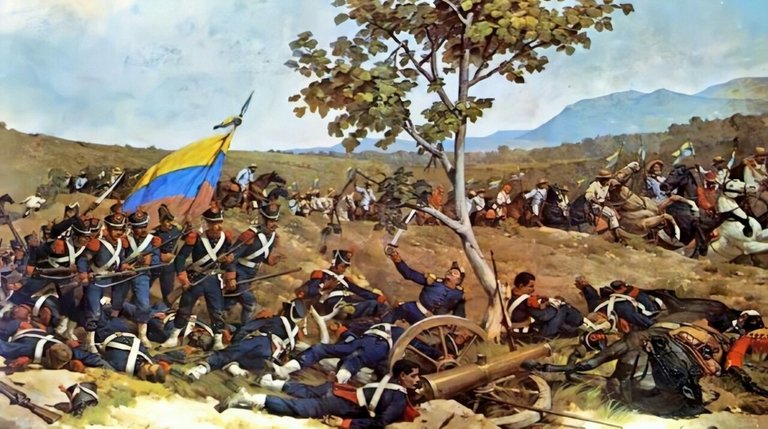
Fuente

In Venezuelan history it happened in a different way
Unlike the Hellenic people, our Venezuelan civilization has its first epic at the dawn of our political independence, with the work of Eduardo Blanco entitled Heroic Venezuela, written in 1881. In one of my most recent posts I went a little deeper into this work and also explained that our literature was born with the men of politics because they were the ones who enjoyed the privilege of writing. The Greek aedos started a tradition of oral transmission that survived in this form for centuries, until finally these songs were written for the first time on tablets. But our literature began directly in writing emanating from the hands, for the most part, of the politicians of our history. This is why our emblematic works come from men like Simón Rodríguez, Andrés Bello, Francisco de Miranda, the Liberator Simón Bolívar, Eduardo Blanco; or Fermín Toro, the writer of La Sibila de los Andes.

El polímata Fermín Toro
Fermín Toro no se dedicó exclusivamente a las letras, pues su área era la política; de hecho, esta obra tiene un final un poco abrupto y ciertos vacíos, pero esto no le resta carácter literario, porque en esta obra lo que prevalece es lo que expresa: una amalgama entre el pensamiento romántico y político del escritor.

The polymath Fermin Toro
Fermín Toro did not dedicate himself exclusively to literature, since his area was politics; in fact, this work has a somewhat abrupt ending and certain gaps, but this does not detract from its literary character, because in this work what prevails is what it expresses: an amalgam between the romantic and political thought of the writer.

Al igual que Eduardo Blanco y Simón Bolívar, Fermín Toro era un romántico.


La sibila de los Andes es un cuento que ya en el título le da un tono de relato sagrado, desde lo más alto de la montaña la Elvira se adentra en el mar de sus sentimientos y luego emerge de la profundidad de sus emociones para contar su historia. Si consideramos qué es una sibila en primer lugar, como bien dije al inicio, a la antigua Grecia, en la que la Sibila era una sacerdotisa del dios Apolo, ella se encontraba en el Templo de Delfos y su presecia era algo sumamente sagrado porque a través de lo que la sibila contaba se obtenía una palabra cuyo contenido era importante. Era palabra divina, una suerte de presagio otorgado por una sabiduría ancestral. Fermín Toro nos ofrece una sibila venezolana, andina, que relata una historia que se encuentra en su corazón pero también en el corazón de todo un pueblo.

Fuente
Toro construye un ambiente construido con base en la sociedad de ese entonces y sus ideales políticos y románticos. El romanticismo de Fermín Toro era un romanticismo social que por el contrario del romanticismo idílico, toda la carga emotiva, tormentosa y sensible que tiene la historia de la sibila se debe a la dinámica social que ocurría en ese momento. Elvira era una esclava, ya este primer aspecto del personaje nos indica una situación social; y pese a ser una esclava, pues sus padres eran esclavos, sus amos decidieron adoptarla y le dieron todos los privilegios como una hija de sangre. Esta inclusión de una mujer negra y esclava dentro del seno de una familia blanca y noble, sin prejuicios y rodeado de toda la grandeza de un espíritu humano que entiende valores como la libertad, el trato hacia el otro como un igual son claros elementos de la visión del romanticismo social al que apuntaba Fermín Toro.

The Sibyl of the Andes is a story that already in the title gives a tone of sacred tale, from the top of the mountain Elvira enters the sea of her feelings and then emerges from the depths of her emotions to tell her story. If we consider what a sibyl is in the first place, as I said at the beginning, to ancient Greece, in which the Sibyl was a priestess of the god Apollo, she was in the Temple of Delphi and her presence was something extremely sacred because through what the sibyl told a word was obtained whose content was important. It was a divine word, a sort of omen granted by an ancestral wisdom. Fermín Toro offers us a Venezuelan, Andean sibyl, who tells a story that is in her heart but also in the heart of an entire people.
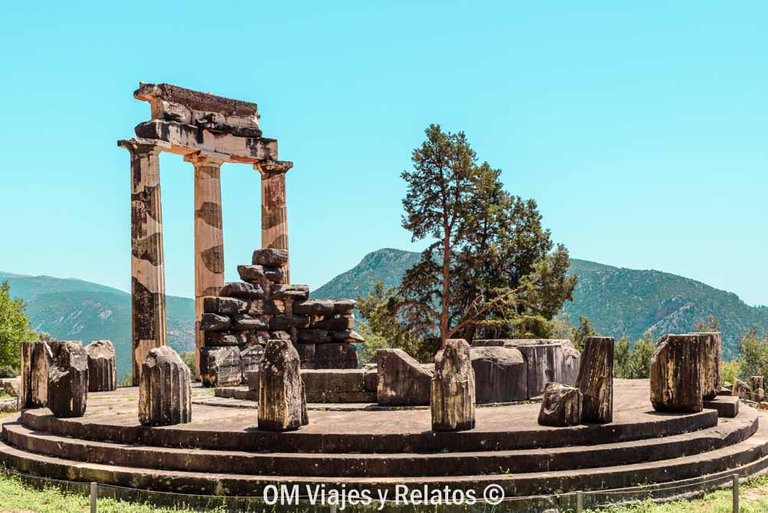 Templo de Delfos - Grecia.
Templo de Delfos - Grecia.Fuente
Toro constructs an environment based on the society of that time and its political and romantic ideals. Fermín Toro's romanticism was a social romanticism that, on the contrary to the idyllic romanticism, all the emotional, stormy and sensitive charge that the story of the sibyl has is due to the social dynamics that occurred at that time. Elvira was a slave, already this first aspect of the character indicates a social situation; and despite being a slave, because her parents were slaves, her masters decided to adopt her and gave her all the privileges as a daughter of blood. This inclusion of a black woman and slave within the bosom of a white and noble family, without prejudice and surrounded by all the greatness of a human spirit that understands values such as freedom, the treatment of others as equals, are clear elements of the vision of social romanticism to which Fermín Toro pointed.
 Santuario de Atenea afuera del recinto.
Santuario de Atenea afuera del recinto.Fuente


Una familia que desafía los preceptos
Pero aunque esta familia haya contrariado los preceptos sociales establecidos, tomando la decisión de adoptar a una esclava y darle todos los privilegios de una hija, aun hay personas que se resisten a salir de dichos preceptos. Por eso, en el baile de Teresa con su enamorado, algunos comensales miran con ojeriza a Elvira, para ellos solo importa que lo socialmente establecido con respecto a la diferencia de color de piel de las personas.
En este relato no es Teresa, la mujer blanca, o algun otro miembro de la noble familia quien relata la historia de Elvira, sino ella misma entona su voz para hablar de su vida. El hecho de que una esclava sea la narradora y protagonista de la historia es un elemento romántico-social. La sibila andina se ha exiliado a sí misma para confesar el por qué ha perdido la familia que le dio el calor de un hogar, pues se ha enamorado del mismo hombre que su hermana. Su condición social y la traición al amor de su hermana, por desear al mismo hombre que ella, la han condenado a que nunca podrá conocer el amor.
A family that defies the precepts
But although this family has contradicted the established social precepts, taking the decision to adopt a slave and give her all the privileges of a daughter, there are still people who are reluctant to leave these precepts. That is why, at Teresa's dance with her lover, some of the diners look at Elvira with angriness, for them it only matters that what is socially established with respect to the difference in skin color of people.
In this story it is not Teresa, the white woman, or any other member of the noble family who tells the story of Elvira, but she herself speaks her voice to talk about her life. The fact that a slave is the narrator and protagonist of the story is a romantic-social element. The Andean sibyl has exiled herself to confess why she has lost the family that gave her the warmth of a home, because she has fallen in love with the same man as her sister. Her social condition and the betrayal of her sister's love, because she desires the same man as her sister, have condemned her to never be able to know love.


Ahora, es tu turno de leerla
Toda la melodía romántica que acompaña las palabras de Elvira es lo que hace a La Sibila de los Andes una de las más significativas obras de Fermín Toro, además de Los mártires.
Espero que esta apreciación que estoy compartiendo sobre La Sibila de los Andes te haya despertado el ánimo para leerla, pues la verdad, el ambiente de tormento que trasmite el cuento te envuelve en toda una nube de tiempo, sin darte cuenta, de un momento a otro estarás al final de la historia, preguntándote si realmente es el final. En la versión digital que mi profesora de Literatura Venezolana I nos suministró para el curso, el cuento en sí tiene una extensión de 5 páginas. Pero dentro de esas cinco páginas hay más de 100 años de historia venezolana representada en el universo ficcional creado por Toro. Gracias por llegar hasta el final y si has leído este cuento, déjame saber tu experiencia de lectura en los comentarios.

Now, it's your turn to read it
All the romantic melody that accompanies Elvira's words is what makes The Sibyl of the Andes one of Fermín Toro's most significant works, besides The Martyrs. I hope that this appreciation that I am sharing about La Sibila de los Andes has awakened your spirit to read it, because the truth is that the atmosphere of torment that the story transmits envelops you in a cloud of time, without realizing it, from one moment to the next you will be at the end of the story, wondering if it is really the end. In the digital version that my Venezuelan Literature I professor provided us with for the course, the story itself is 5 pages long. But within those five pages there are more than 100 years of Venezuelan history represented in the fictional universe created by Toro. Thank you for making it to the end and if you have read this story, let me know your reading experience in the comments.

Fuentes
Briceño Iragorry, Mario. La historia como elemento creador de la cultura. Biblioteca de la Academia Nacional de la Historia. Caracas, 1985. [Versión en PDF]
Jaeger, Werner. Paideia. Los ideales de la cultura griega. Libro primero. Traducido por Joaquin Xiral. Fondo de Cultura Económica México. 2001. [Versión en PDF]
Marchese, Angelo. Diccionario de retórica, crítica y terminología literaria. Traducido por Joaquin Forradellas. Ariel Letras. 2013.
[Versión en PDF]
Toro, Fermin. La Sibila de los Andes Versión en PDF suministrada por la docente de la asignatura Literatura Venezolana I



Now, it's your turn to read it
All the romantic melody that accompanies Elvira's words is what makes The Sibyl of the Andes one of Fermín Toro's most significant works, besides The Martyrs. I hope that this appreciation that I am sharing about La Sibila de los Andes has awakened your spirit to read it, because the truth is that the atmosphere of torment that the story transmits envelops you in a cloud of time, without realizing it, from one moment to the next you will be at the end of the story, wondering if it is really the end. In the digital version that my Venezuelan Literature I professor provided us with for the course, the story itself is 5 pages long. But within those five pages there are more than 100 years of Venezuelan history represented in the fictional universe created by Toro. Thank you for making it to the end and if you have read this story, let me know your reading experience in the comments.

Fuentes
Briceño Iragorry, Mario. La historia como elemento creador de la cultura. Biblioteca de la Academia Nacional de la Historia. Caracas, 1985. [Versión en PDF]
Jaeger, Werner. Paideia. Los ideales de la cultura griega. Libro primero. Traducido por Joaquin Xiral. Fondo de Cultura Económica México. 2001. [Versión en PDF]
Marchese, Angelo. Diccionario de retórica, crítica y terminología literaria. Traducido por Joaquin Forradellas. Ariel Letras. 2013.
[Versión en PDF]
Toro, Fermin. La Sibila de los Andes Versión en PDF suministrada por la docente de la asignatura Literatura Venezolana I


Congratulations @saydij! You have completed the following achievement on the Hive blockchain And have been rewarded with New badge(s)
Your next target is to reach 400 comments.
You can view your badges on your board and compare yourself to others in the Ranking
If you no longer want to receive notifications, reply to this comment with the word
STOPTo support your work, I also upvoted your post!
Check out our last posts: